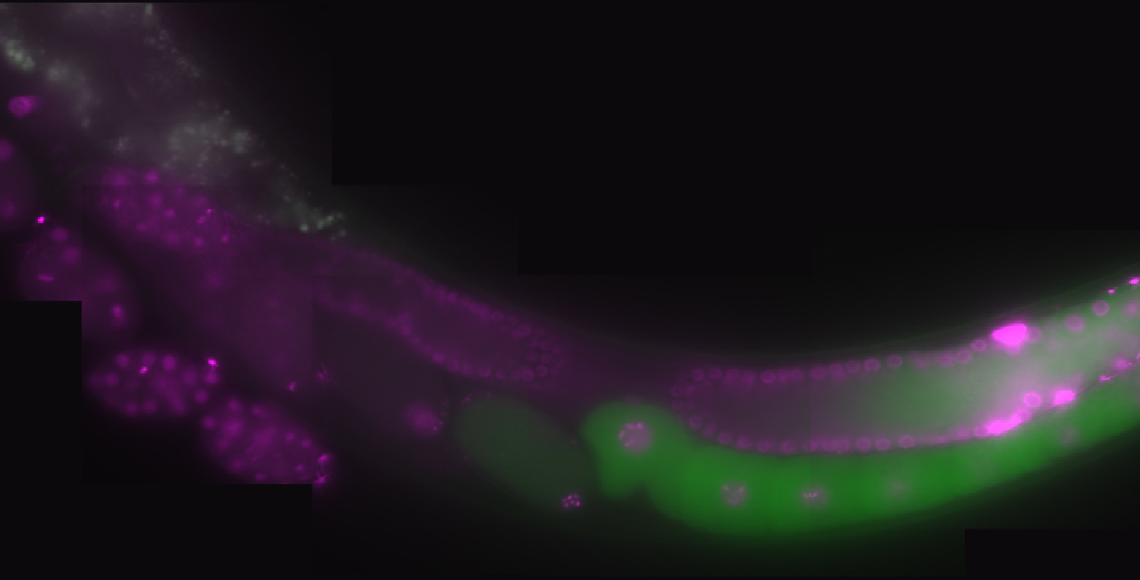
On the biological and biomedical importance of RNA:
The biomolecule RNA (Ribonucleic Acid) plays essential roles in biology and medicine, including these prime examples:
- RNA has central roles in the transmission and decoding of genetic information.
- RNA serves as a genome for viruses that have huge economic and health impacts.
- RNA catalyzes crucial biochemical reactions.
- RNA provides a structural framework for macromolecular machines.
- RNA molecules act in cis or in trans to control gene expression and biochemical processes.
- Dysfunction and dysregulation of RNA underlie diseases including cancer, immune disorders, neurodegeneration, diabetes, and viral diseases.
- RNA is now medicine that can prevent and treat human diseases.
RNA research at the University of Minnesota:
We are a community of RNA researchers who employ a wide range of techniques to study RNA function and disorders using approaches spanning from the atomic to organismal levels. RNA research is at highpoint of discovery with enormous impact on our understanding of biology and disease. These advances are being fueled by rapid advances in genomics and next generation sequencing, bioinformatics, genome editing, and imaging technologies.
The mission of the RNA Supergroup:
- To advance RNA research to the benefit of the public and medicine
- To connect RNA researchers and promote multidisciplinary collaborations
- To enhance the training of students and postdoctoral fellows
- To communicate the importance of RNA biology and its medical relevance to the community
- To elevate the University of Minnesota’s reputation in RNA research
- To facilitate recruitment of RNA researchers
- To promote development of collaborative research grants
- To facilitate expansion of shared research resources
This mission is promoted through the following activities:
- RNA World journal club
- Faculty research seminars
- Seminars from leading RNA researchers from around the world
Join us:
Anyone with an interest in RNA can join the RNA Supergroup by emailing Aaron Goldstrohm
Participating RNA Supergroup faculty
- Frank Albert studies how regulatory genetic variation among individuals shapes transcriptomes and proteomes.
- Kate Adamala focuses on developing and applying tools for readout of mammalian cell states and for control of cellular processes, achieved via combining top-down and bottom-up, RNA-based approaches to synthetic biology.
- Kathleen Boris-Lawrie studies post-transcriptional control of retroviruses, from HIV-1 to Rous sarcoma virus. Her primary interest is translation control by structural elements in the 5' untranslated region of viral and select cellular mRNAs and transactivation by RNA binding proteins.
- Scott Dehm studies transcriptional regulation of RNA expression mediated by the androgen receptor. His laboratory also studies mRNA splice variants of the androgen receptor, which are constitutively active transcription factors that drive resistance to therapies for prostate cancer.
- Aaron Engelhart pursues research towards a better understanding of nucleic acid folding and function in order to 1) elucidate unanticipated roles for nucleic acids in vivo and 2) develop novel nucleic acid-based catalysis, imaging, analytical, and diagnostic technologies
- Aaron Goldstrohm studies post-transcriptional regulation of messenger RNAs by RNA-binding proteins, ribonucleases, and non-coding RNAs with biomedical relevance to cancer, obesity, and neurological disorders.
- R. Stephanie Huang develops and employs novel bioinformatic tools to identify potential pharmacogenomic biomarkers in high-throughput datasets. The pharmacogenomic markers of interest include germline and somatic genetic variants, expression of protein coding genes, long non-coding RNA and microRNA. These novel biomarkers are then experimentally evaluated in cancer and normal cell lines as well as in clinical samples.
- David Greenstein works on germline development in the nematode Caenorhabditis elegans. One main project in the lab investigates the mechanisms by which the TRIM-NHL protein LIN-41 regulates female meiosis and the oogenenic program in this organism.
- Michael Latham uses solution state NMR and other biophysical approaches to study the structures and dynamics of RNA binding proteins involved in various biological processes.
- Hinh Ly studies the life cycle of deadly human RNA viruses, such as Lassa virus and SARS-CoV2. His research seeks to understand gene expression patterns and spatiotemporal regulation of viral RNA trafficking, and the molecular mechanisms used by pathogenic viruses to evade host innate immune responses triggered by the pathogen-associated molecular-pattern (PAMP) RNAs.
- Chad Myers uses computational and functional genomics approaches to study protein function and genetic networks.
- Hai Dang Nguyen seeks to determine mechanisms and therapeutic strategies for patients with Myelodysplastic syndrome and other cancers harboring RNA splicing factor gene mutations.
- Theresa Reineke uses chemistry to develop polymeric vehicles for the efficient delivery of nucleic acids (RNA and DNA) into cells and tissues.
- Ann Rougvie studies temporal regulation of gene expression during development using Caenorhabditis elegans.
- Guisheng Song researches the regulatory roles of microRNAs in non-alcoholic fatty liver disease and liver cancer.
- Subbaya Subramanian studies microRNA regulatory networks in sarcoma and other cancers.
- Natalia Tretyakova investigates the structural basis for carcinogenic and anticancer activity of DNA- and protein-modifying agents.
- Thu Truong studies transcriptional and post-transcriptional gene regulation in breast cancer.
- Jeongsik Yong researches post-transcriptional regulation of mRNA processing in cancer.
- Sara Zimmer studies RNA processing and regulation in the mitochondria of unicellular eukaryotes, including trypanosomes.